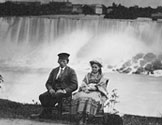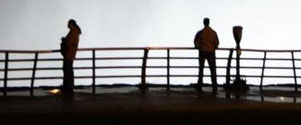

|
||||||||||||||||||||||||||||||||||||||||||
|
| ||||||||||||||||||||||||||||||||||||||||||
 |
 |
 |
 |
 Early German Lutherans Left Their Mark on Niagara County Young Niagara County added another ingredient to its ethnic “melting pot” in the 1830s and 40s with the arrival of hundreds of German Lutherans who took up residence in the county. These men and women left Germany to seek religious freedom after King Frederick William III of Prussia decreed that all Lutheran followers of Martin Luther must accept the edicts of the “Reformed” Lutheran Church. About two hundred families in Bergholtz, Prussia formed the “Lutheran Evangelican” and appointed three men, John Williams, John Sy and Frederick Moll to serve as land agents to prepare for the resettlement. They purchased 2,100 acres from Washington Hunt and set up 121 lots of one-acre each. This was completed in 1843 and each arriving family received one lot in the new village. The site of New Bergholtz was very swampy due to beaver dams that occupied all of the area creeks and streams. This made the site almost inaccessible so an early task for the settlers was to cut a road through the virgin forest. A large communal barn was erected for use of the arriving families and many lived in the barn until their log cabins were completed on the original 121 lots. Washington Hunt gave the settlers a team of oxen and took a strong interest in the success of the settlement. The street names in the new village reflected this with names like Hunt Street, Washington Street, Sy Road, Luther Street, Niagara Street and the like. Timber was one of the first products produced by the settlers. The Erie Canal running through Tonawanda Creek and the Niagara River provided cheap transportation for timber and later products. Being deeply religious, the settlers held their religious services in the large barn until 1846 when they erected the largest church in Niagara County at that time, called Holy Ghost Church. The same land agents also bought land for Prussian settlers coming to St. Johnsburg in 1843. These settlers, however, purchased larger lots and the community grew as an extension of New Bergholtz. In the same year, Martinsville, a community separated from the other German Lutherans, was settled by about 30 families. In 1897, Martinsville was absorbed by North Tonawanda. In similar fashion, the site of New Walmore was laid out in small farm lots of about 25 to 50 acres. Over the years, “New” was dropped in both New Walmore and New Bergholtz and the village names took on their simpler form. In 1847-48, Anson Wolcott purchased 2,000 acres of land in the Town of Royalton. By 1875, a large part of the acreage had been cleared of timber and the Wolcott tract was subdivided for 75 additional families from Prussia. Like their counterparts in the Wheatfield settlements, once the timber was cleared the land was usually planted in wheat. Formed to provide religious freedom for their families, all of the German Lutheran communities in Niagara County built churches for their worship. Originally, services were offered exclusively in the German language, and eventually churches added an English service as the need arose. Most of these early churches still have active congregations. Douglas Farley, Director Ann Marie Linnabery Erie Canal Discover Center 24 Church St. Lockport NY 14094 716.439.0431 CanalDiscovery@aol.com www.NiagaraHistory.org |
|